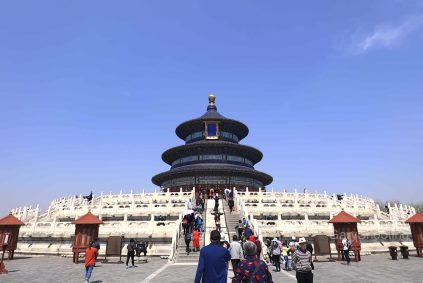The Geographical Roots of Guangzhou’s Culinary Identity
Guangzhou’s cuisine is a living tapestry woven from its coastal location, fertile river deltas, and historical trade networks. The city’s position at the Pearl River’s mouth has shaped a culinary tradition that prioritizes freshness, seasonal ingredients, and a harmonious balance of flavors—a philosophy deeply tied to its environment. Unlike the bold spices of inland regions, Cantonese cooking emphasizes subtlety, allowing the natural sweetness of seafood or the earthiness of vegetables to take center stage. This approach reflects the abundance of local produce, from river fish to tropical fruits, and the influence of neighboring regions like Fujian and Guangxi.
Coastal Bounty: Seafood as a Way of Life
The South China Sea provides a year-round supply of diverse seafood, influencing dishes like steamed fish—a staple where freshness is non-negotiable. Chefs look for live fish with clear eyes and firm flesh, often serving them whole to symbolize completeness. Oysters from the nearby Zhujiang Estuary are another highlight, shucked raw or grilled with garlic and soy sauce to highlight their briny sweetness. Smaller coastal towns near Guangzhou, such as Nansha, contribute crabs and prawns that find their way into soups and stir-fries, their flavors shaped by the estuary’s mix of saltwater and freshwater.
The tradition of preserving seafood also stems from the coast. Salted fish, dried shrimp, and fermented anchovies are used sparingly to add depth to dishes like lai fun (thick rice noodles) or congee, reflecting a historical need to extend the shelf life of perishable ingredients. These preserved elements remain central to grassroots cooking, connecting modern diners to their maritime heritage.
River Delta’s Agricultural Wealth: From Paddy Fields to Tables
The Pearl River Delta’s fertile soil supports rice cultivation, making it the backbone of Cantonese meals. Steamed rice accompanies nearly every dish, while glutinous rice is molded into festive treats like nian gao (sticky rice cake) during Lunar New Year. The delta’s waterways also yield lotus roots, water chestnuts, and taro—ingredients that feature prominently in soups and desserts. Lotus seed paste, for instance, fills mooncakes, while water chestnuts add crunch to sweet tong sui (dessert soups).
Vegetables grown in the region’s mild climate, such as gai lan (Chinese broccoli) and bok choy, are prized for their tenderness. These greens are often stir-fried with minimal seasoning—a dash of garlic, ginger, and oyster sauce—to let their natural flavors shine. The delta’s proximity to mountains also introduces ingredients like wild mushrooms and bamboo shoots, which add earthy notes to braised dishes and hot pots.
Cultural Crossroads: Historical Influences on Guangzhou’s Cuisine
Maritime Silk Road Legacy: Spices and Techniques from Afar
Guangzhou’s role as a port city on the Maritime Silk Road introduced foreign flavors that were adapted to local tastes. Persian saffron, Indian black pepper, and Southeast Asian lemongrass appeared in medieval kitchens, though they were used sparingly compared to bold regional cuisines. For example, curry mee (curry noodles), a fusion of local wheat noodles and Malay-style curry, reflects this blending. The dish uses coconut milk for richness but tones down the heat to suit Cantonese palates, often adding seafood or chicken instead of beef.
Trade also brought new cooking methods. Deep-frying, likely introduced via Arab and Persian merchants, became a hallmark of dim sum, transforming ingredients like tofu and vegetables into crispy delights. Meanwhile, the use of clay pots for slow-cooking, seen in dishes like clay pot rice, may have roots in Middle Eastern tagines, adapted to local ingredients and fuel sources.
Lingnan Culture: Preserving Traditions Amid Modernity
The Lingnan region’s cultural identity, shaped by its subtropical climate and indigenous traditions, permeates Guangzhou’s food. Herbal soups, for instance, are rooted in traditional Chinese medicine, using ingredients like goji berries and astragalus root to balance “heat” and “dampness” in the body. These soups are often simmered for hours in earthenware pots, a method believed to enhance their nourishing properties.
Festive foods also reflect Lingnan customs. During the Dragon Boat Festival, zongzi (sticky rice dumplings) wrapped in bamboo leaves are filled with mung beans, pork, and salted egg yolk—a combination that symbolizes prosperity and health. Similarly, yue bing (mooncakes) exchanged during the Mid-Autumn Festival feature lotus seed paste or red bean filling, their round shapes representing unity.
Urban and Rural Divide: How Location Shapes Eating Habits
City Life: Fast-Paced yet Tradition-Bound
In metropolitan Guangzhou, busy schedules coexist with a deep respect for culinary heritage. Street food stalls and cha chaan teng (tea restaurants) offer quick bites like cheong fun (rice rolls) and 菠萝包 (pineapple buns), but these dishes remain rooted in tradition. Even fast food adaptations, such as instant noodles served with char siu (barbecued pork), reflect the city’s love for savory, umami-rich flavors.
Urban diners also embrace communal dining. Hot pot restaurants, where diners cook raw ingredients in a simmering broth at the table, thrive in winter, fostering social interaction. The broth bases vary from mild chicken to spicy Sichuan-style, though Cantonese versions lean toward herbal or tomato-based options to complement seafood and thinly sliced beef.
Rural Traditions: Slow Food and Seasonal Rhythms
In Guangzhou’s outskirts, villages like Panyu and Conghua maintain slower-paced food cultures centered around seasonal harvests. Farmers’ markets overflow with just-picked produce, and meals are planned around daily catches from ponds or rivers. In autumn, for example, families gather to make lai chi gang (sticky rice stuffed in lotus leaves), using newly harvested rice and fresh lotus leaves for fragrance.
Rural cooking also relies on age-old preservation techniques. Sun-dried vegetables, salted meats, and fermented tofu are staples, prepared during harvest seasons to last through leaner months. These methods not only extend shelf life but also create unique flavors—smoky, tangy, or umami-rich—that define village cuisine. Even today, many rural households eschew modern appliances, preferring wood-fired stoves for stir-fries and steaming, which they believe impart a distinct smokiness.
















